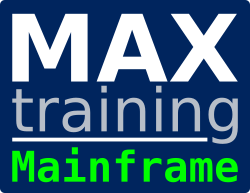IBM Z: Technical Overview of HW and SW Mainframe Evolution
Code: ES89GDescription
This course is designed to provide an understanding of today’s complex system mainframe environment on the IBM z Systems. It is mainly targeted for operators, technical support, system programmers, and any others who need to keep current in this mainframe environment. Through lecture you learn how the hardware and operating systems interact.
Audience
The class should consist of lead operators, technical support personnel, system programmers, or anyone in the technical field who requires an understanding of how the current hardware and software interact in the large mainframe environment.
z/Architecture and z/OS overview and concepts is an optional unit depending on the student audience. It is the instructor’s decision to either present the material in the unit or explain to the students that the unit contains detailed z/Architecture information and might not be applicable to the student’s job role and responsibilities.
Prerequisites
You should have an understanding of:
• Basic data processing concepts
• I/O concepts
Objectives
• Describe the evolution of the data center, categorize the various server platforms, and servers that are commonly found there and their workloads
• Identify past, current, and future data center trends
• Describe the basic functions, characteristics, and terminology of z Systems servers
• Identify and list the various z Systems servers and hardware models, from zSeries server to the
latest z14 and z14 ZR1 servers
• Identify the number of CPs and specialty processors available to various z Systems
• Identify and describe key components of z Systems and compare various z Systems
components
▪ Frame layout, drawer, and cage usage
▪ Server models, processor drawers, books, memory, and cache structure
▪ Performance and millions of service units (MSUs)
• Describe and compare I/O infrastructure and processor usage across z14 to zEC12 mainframes
▪ I/O drawers, cages, and technology used
▪ PU, cache, and fan-out connectivity
• Describe how and what z Systems physical components are used when processing instructions
and performing an I/O operation
• Identify z Systems Capacity on Demand (CoD) options available for planned and unplanned
outages
• Describe how logical partitioning is used, resource assignments, channel and CHPID types,
assignments and initialization activities
• Describe the purpose and use of HCD
• Use the HMC to control basic operational tasks and monitor z Systems servers
• Identify and describe mainframe operating systems and their supported mainframe servers
• Describe the difference between a base and Parallel Sysplex
• Identify and describe the major enhancements provided by the recent z Systems software and
hardware platform
• The following are optional objectives in the z/Architecture and z/OS overview and concepts unit:
▪ Explain basic z/Architecture terminology and concepts for Real and virtual storage Address spaces, data spaces, and hiperspaces
▪ Identify processor architectural modes and their supported addressing implementations
▪ Define what is z/OS
▪ Name the server solutions included in z/OS
▪ Identify the characteristics of a base and Parallel Sysplex
▪ Identify current CFs and connectivity options
▪ Describe the purpose and use of the coupling facility
Topics
Day 1
(00:30) Welcome
(00:30) Introduction and course overview
(02:00) Unit 1: Mainframe directions and z Systems (04:00) Unit 2: Server hardware and I/O configuration
Day 2
(02:00) Unit 3: MVS to z/OS overview and processor concepts
(01:30) Unit 4: Hardware Management Console basics
(02:00) Unit 5 (Optional): z/Architecture and z/OS overview and concepts
Price (ex. VAT)
Duration
Delivery methods
- Classroom
- On-site (at your location)
- Virtual (instructor online)
